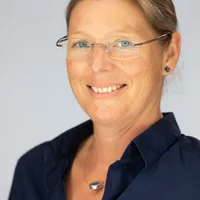Two-dimensional magnetic structures are regarded as a promising material for new types of data storage, since the magnetic properties of individual molecules can be investigated and modified. For the first time, researchers have now produced a wafer-thin ferrimagnet, in which molecules with different magnetic centers arrange themselves on a gold surface to form a checkerboard pattern. Scientists at the Paul Scherrer Institute and at the Swiss Nanoscience Institute at the University of Basel , in collaboration with other partners, published their findings in the journal Nature Communications.
Ferrimagnets possess two magnetic centers of different strengths and which point in opposing directions. Two-dimensional, quasi-flat ferrimagnets would be suitable for use as sensors, data storage devices or in a quantum computer, since the two-dimensional arrangement allows the magnification state of the individual atoms or molecules to be selected. For mathematical and geometrical reasons, however, it has so far not been possible to produce two-dimensional ferrimagnets.
Choice of materials makes the impossible possible
An international consortium of scientists centered at the Photon Science Department at the Paul Scherrer Institute (PSI), and led by Professor Thomas Jung’s group, has now found a method of making a two-dimensional ferrimagnet.
The researchers first produce “phthalocyanines” – hydrocarbon compounds with different magnetic centers composed of iron and manganese. When these phthalocyanines are applied to a gold surface, they arrange themselves into a checkerboard pattern in which molecules with iron and manganese centers alternate. Using the so-called X-ray magnetic circular dichroism technique available at the X-Treme beam line of the Swiss Light Source (PSI) the researchers were able to prove that the surface is magnetic, and that the magnetism of the iron and manganese is of different strengths and appears in opposing directions – all characteristics of a ferrimagnet.
“The decisive factor of these properties is the electrically conductive gold substrate, which mediates the magnetic order,” explains Dr. Jan Girovsky from the PSI, lead author of the study. “Without the gold substrate, the magnetic atoms would not sense anything from each other and the material would not be magnetic.”
The decisive effect of the conducting electrons in the gold substrate is shown by a physical effect detected in each magnetic atom using scanning tunnel spectroscopy. The experiments were conducted at different temperatures and thus provide evidence of the strength of the magnetic coupling in the new magnetic material. Model calculations performed by the long standing research partner of the group, Prof. Peter Oppeneer from the University of Uppsala, confirmed the experimentally observed effect and indicated that special electrons attached to the surface in the gold substrate are responsible for this type of magnetism.
Nanoarchitecture leads to new magnetic materials
“The work shows that a clever combination of materials and a particular nanoarchitecture can be used to produce new materials that otherwise would be impossible,” says Professor Nirmalya Ballav of the Indian Institute of Science Education and Research in Pune (India), who has been studying the properties of molecular nano-checkerboard architectures for several years with Jung. The magnetic molecules have great potential for a number of applications, since their magnetism can be individually investigated and also modified using scanning tunnel spectroscopy.
Original Publication
Long-range ferrimagnetic order in a two-dimensional supramolecular Kondo latticeJan Girovsky, Jan Nowakowski, Md. Ehesan Ali, Milos Baljozovic, Harald R. Rossmann, Thomas Nijs, Elise A. Aeby, Sylwia Nowakowska, Dorota Siewert, Gitika Srivastava, Christian Wäckerlin, Jan Dreiser, Silvio Decurtins, Shi-Xia Liu, Peter M. Oppeneer, Thomas A. Jung & Nirmalya Ballav
Nature Communications, 8:15388, 2017, DOI: 10.1038/ncomms15388


